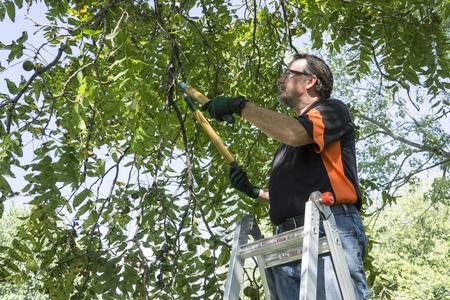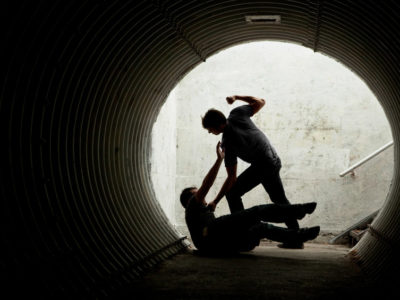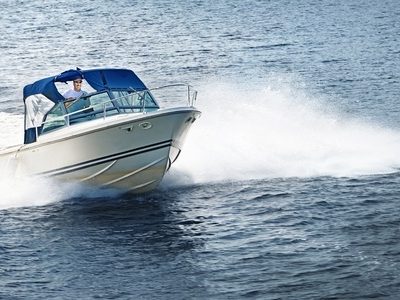

Top 10 Tree Trimming Safety Tips
Trimming limbs and branches from a tree rather than removing it completely can be dangerous and requires a specific set of skills including climbing and pruning, often with portable power tools like chainsaws or trimmers. Reaching tall branches can put a person at risk for falls or electrocution if they bump into power lines. The two leading causes of death while tree trimming are falls from heights and electrocution. Understanding basic tree trimming safety is important to avoiding a tree trimming accident.
Top 10 Tree Trimming Safety Tips
1. Wear the right Gear
If using a trimmer or chainsaw, you will want to protect your hands with leather lineman’s gloves, your eyes with comfortable eye protection, your head with a hard hat, and your ears with ear protection. To help reduce your chance of slipping and falling, wear shoes with heel and slip-resistant soles. If you are tree trimming near an electrical wire wear close-fitting, long sleeved clothing and a non-conductive hard hat.
2. Ensure that your tools are in good repair
Check to make sure that your trimming tools, ladder, harnesses, latches, and climbing rope are all in good condition. Inspect and sharpen any tools to make sure they operate efficiently and safely. Note: never climb with tools in your hand; have a partner pass them up to you.
3. Setup fall protection
If you are using a ladder, tie it to a sturdy branch. For higher climbs, you may need a fall protection harness climbing rope, or an aerial lift.
4. Check the weather forecast
If the day’s weather forecast looks wet, icy, stormy, or windy, do not attempt to trim a tall tree that will require climbing or aerial access. After a storm, you should inspect the tree and ground for hazards like broken limbs and electrical lines before you start work.
5. Mark off your work area
You can help to protect yourself, co-workers, and passersby by marking off your work area. Be extra vigilant if the tree you are trimming extends over a road: wear high visibility clothing and determine if cones and signs are needed to direct traffic around the tree.
6. Work with a partner
If you need to climb up into a tree then it is best to work with a partner who can stay on the ground while you trim. A partner is required for work within 10 feet of power lines.
7. Keep conductive tools away from power lines
Ladders, pole trimmers, and other tools are capable of conducting electricity if they come into contact with overhead power lines or electrical conductors. A downed power line may still contain enough energy to cause serious injury. To be safe, always assume that power lines are energized, until you confirm that they are not and be very cautious in moving conductive tools around them.
8. Keep a safe distance from power lines
If your tree trimming job requires you to get within 10 feet of energized power lines, the job must be done by trained and experienced line-clearance tree trimmers. A second tree trimmer is required within normal voice communication range. Contact the utility company to de-energize and ground the lines before you proceed with your work.
9. Do an inspection of the tree before climbing
Look for dead or weak tree limbs and break or cut off any that are dead. Never rely on dead, weak, or split branches for support. Place your feet and hands on separate limbs as you climb and only move one step at a time. If the tree is unsafe to climb, an aerial lift may be necessary.
10. Never take on a task for which you are not trained
Never turn off power to an electrical line or use an aerial lift or chainsaw unless you are trained to do so.
If you or a loved one were injured in an accident, you have enough to deal with. Let an experienced accident attorney fight for the full compensation that you deserve. It is not uncommon to receive a settlement from the insurance company that is five to ten times bigger with the help of a lawyer. Call the caring accident attorneys at Tario & Associates, P.S. in Bellingham, WA today for a FREE consultation! We have been representing residents of Whatcom County, Skagit County, Island County and Snohomish County since 1979. You will pay nothing up front and no attorney fees at all unless we recover damages for you!




